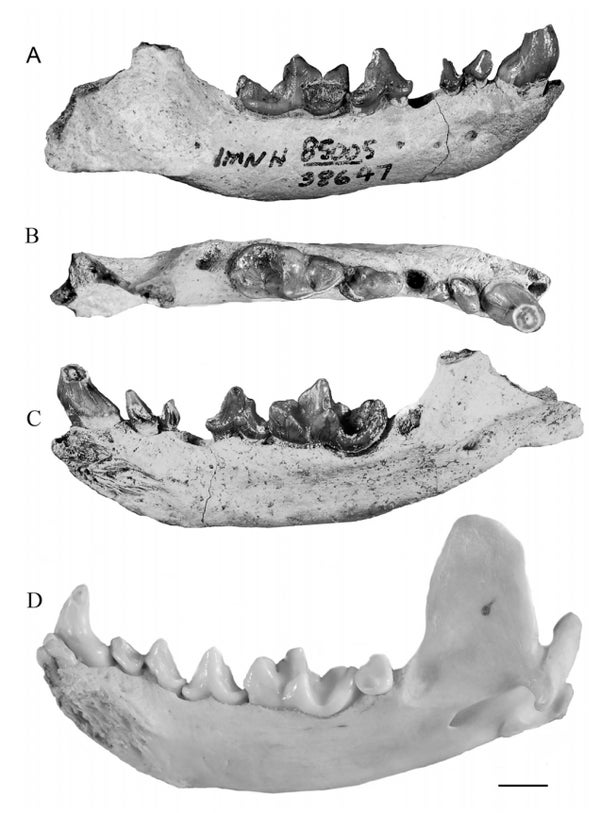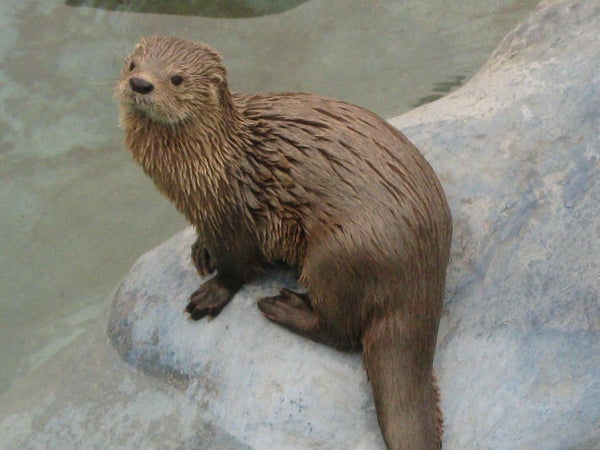This article was published in Scientific American’s former blog network and reflects the views of the author, not necessarily those of Scientific American
There's an entire chorus of rockstar fossils out there. For example, a musclebound worm named for Henry Rollins, a snaggletoothed dinosaur dubbed in honor or Mark Knopfler, punk trilobites that carry the names of The Ramones, and more. Now another prehistoric fossil has joined the band - an ancient otter named in tribute to the Grateful Dead's Bob Weir.
Paleontologist Kari Prassack described the otter from a lower jaw and an upper arm bone found in Hagerman Fossil Beds National Monument, Idaho. This place is famous for its horse remains - most every western museum seems to have pieces of the zebra-like Hagerman Horse - but far more of the fauna has been uncovered over the years. Just counting the carnivorans, Prassack writes, there are five families and 17 species, with Lontra weiri adding one more to the count.
What makes Weir's otter stand out, though, is that it's now the earliest known member of the genus Lontra in the Americas. Up until now, Prassack writes, the fossil trail of Lontra was restricted to relatively recent records of species that are still alive, and these otters were thought to have been descendants of the Ice Age species Lutra licenti. Weir's otter changes all that. American otters were present on the continent much earlier, around 3.79 million years ago, which means there are certainly other extinct otters waiting to be found along the American fossil trail.

The jaw of Lontra weiri compared with that of a marine otter. From Prassack, 2016.
Fossil Facts
On supporting science journalism
If you're enjoying this article, consider supporting our award-winning journalism by subscribing. By purchasing a subscription you are helping to ensure the future of impactful stories about the discoveries and ideas shaping our world today.
Name: Lontra weiri
Meaning: Lontra is the genus name of American otters, and weiri honors guitarist Bob Weir.
Age: Pliocene, about 3.79 million years old.
Where in the world?: Hagerman Fossil Beds National Monument, Idaho.
What sort of critter?: An otter related to species living in the Americas today.
Size: Comparable in size to the small marine otter of South America.
How much of the creature’s body is known?: A right lower jaw and a left humerus.
Reference:
Prassack, K. 2016.
Lontraweiri, sp. nov., a Pliocene river otter (Mammalia, Carnivora, Mustelidae, Lutrinae) from the Hagerman Fossil Beds (Hagerman Fossil Beds National Monument), Idaho, U.S.A. Journal of Vertebrate Paleontology. doi: 10.1080/02724634.2016.1149075
Previous Paleo Profiles:
The Light-Footed Lizard The Maoming Cat Knight’s Egyptian Bat The La Luna Snake The Rio do Rasto Tooth
